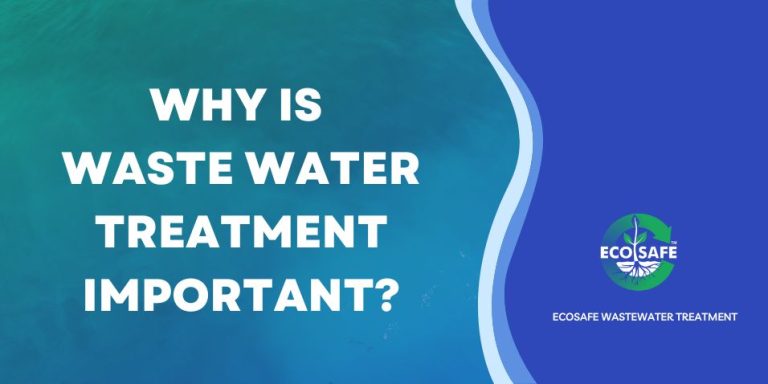The Reclaim Waste PDFs
Table of ContentsReclaim Waste Can Be Fun For Everyone8 Easy Facts About Reclaim Waste DescribedIndicators on Reclaim Waste You Need To KnowThe smart Trick of Reclaim Waste That Nobody is DiscussingThe Facts About Reclaim Waste Revealed
Discover the types, occurrences, and forms of fluid waste. Domestic sewage waste describes the waste and products from a domestic septic container. This kind of waste is created by human beings in residences, institutions, and other structures. This only includes septic storage tanks that have a drainpipe field. The proper administration and disposal of domestic sewage waste require fluid waste to be transferred to a sewer treatment plant where the proper approaches and equipment are related to detoxify and take care of waste.
Business waste typically consists of prospective risks, such as combustible materials or a blend of fluid and solid waste items, and requires an advanced and thorough disposal process. The disposal of business waste usually entails the filtering of waste prior to transportation to guarantee safe and correct disposal. Hazardous waste is created from results and runoff of industrial processes and production.
This sort of waste can not make use of the exact same sewer management transportation or procedures as septic or industrial liquids. The industrial waste monitoring process calls for the inspection and testing of liquid waste prior to it goes through the disposal procedure (liquid waste removal melbourne). Runoff waste is the fluid waste that originates from overflow and excess stormwater in highly populated areas or cities
Drainage waste can trigger contamination and flooding if not managed effectively. Making certain proper waste administration can protect against calamities and minimize environmental damage.
The 4-Minute Rule for Reclaim Waste
Contact PROS Services today to discover our waste monitoring and disposal solutions and the appropriate means to look after the liquid waste you create.
(http://www.askmap.net/location/7161699/australia/reclaim-waste)This supposed 'wastewater' is not just a vital resource yet, after treatment, will be launched to our land, rivers or the ocean. Made use of water from commodes, showers, baths, cooking area sinks, laundries and commercial processes is known as wastewater.

water used to cool down machinery or tidy plant and devices). Stormwater, a kind of wastewater, is overflow that moves from agricultural and city areas such as roofing systems, parks, gardens, roadways, courses and gutters right into stormwater drains, after rainfall. Stormwater moves untreated straight to neighborhood creeks or rivers, ultimately reaching the ocean.
The smart Trick of Reclaim Waste That Nobody is Talking About
In Queensland, a lot of wastewater is dealt with at sewer treatment plants. Wastewater is transported from domestic or industrial sites with a system of sewage systems and pump terminals, known as sewerage reticulation, to a sewer therapy plant. City governments build, preserve and operate most sewage treatment plants. Operators are certified under the Environmental Defense Act 1994 to release cured wastewater at an appropriate ecological criterion into waterways.
The Department of Natural Resources encourages city governments concerning handling, operating and preserving sewerage systems and treatment plants. In unsewered areas, local federal governments might call for owners to mount private or family sewer treatment systems to treat domestic wastewater from commodes, cooking areas, bathrooms and washings. The Department of Natural Resources authorises making use of household systems when they are proven to be reliable.
In some brand-new communities, therapy of some stormwater to remove clutter, sand and crushed rock has actually begun making use of gross pollutant traps. Wastewater treatment happens in four phases: Gets rid of solid issue.
Wastewater after that streams into big storage tanks where solids work out and are gotten rid of as sludge. Grease and residue are skimmed from the surface. Makes use of small living microorganisms referred to as micro-organisms to break down and get rid of staying liquified wastes and fine fragments. Micro-organisms and wastes are incorporated in the sludge. Removes nitrogen and phosphorus nutrients that can cause algal flowers in our waterways and threaten aquatic life.
The 3-Minute Rule for Reclaim Waste
Nutrient removal is not available whatsoever sewer therapy plants because it requires pricey specialised equipment. It is becoming extra common in Queensland. Clear liquid effluent produced after treatment may still consist of disease-causing micro-organisms. If this effluent is released into waterways such as rivers or advice the sea, the micro-organisms will eventually die out.

A lot of wastewater flows right into the sewerage system. Under the Act, neighborhood governments administer authorizations and licences for ecologically relevant tasks (ERAs) entailing wastewater releases that could have a neighborhood effect.
The Ultimate Guide To Reclaim Waste
Surveillance provides accurate info regarding water top quality and can validate that permit problems are being fulfilled. The details obtained through surveillance offers the basis for making water quality decisions.